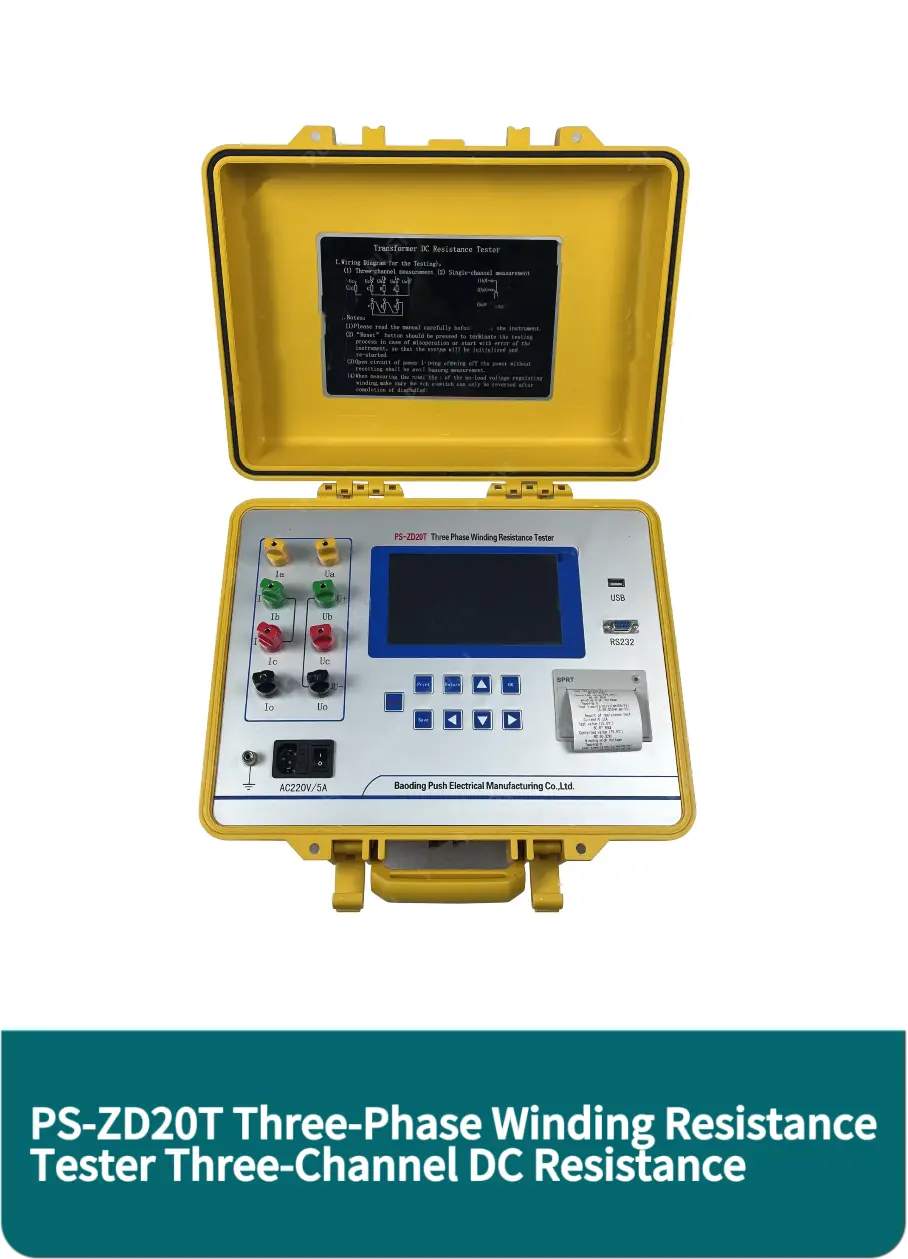TEL:
+86-0312-3189593
 English
English

Telephone:0312-3189593

Email:sales@oil-tester.com
2 月 . 15, 2025 10:32
Back to list
transformer checking with multimeter
Testing transformers with a multimeter is a fundamental skill for anyone working with electrical systems, whether you're a seasoned electrician, an electronics hobbyist, or somewhere in between. Understanding how to perform such tests not only enhances safety and efficiency but also prolongs the life of your electrical systems. This comprehensive guide will delve deep into the essential aspects of transformer testing using a multimeter, offering insights that blend practical experience with professional expertise.
To check for inductance, a characteristic feature of transformers, an LCR meter is typically preferred. However, some advanced multimeters offer this feature. Measuring inductance can help identify partial shorts, which are subtle and could lead to inefficiency or failure if not caught early. Voltage tests require reconnecting the transformer to a power source. Set your multimeter to the appropriate AC voltage setting. Measure output voltage from the secondary winding and compare it to the specified voltage ratio from the manufacturer. Major discrepancies from expected values can indicate internal faults or incorrect winding connections. While current testing offers valuable insights into operational efficiency, caution is advised. If direct measurement is necessary, it should be conducted using a current clamp meter to avoid circuit interruption. This method is safe and provides accurate readings regarding the transformer's performance under load. An authoritative approach is understanding that regular maintenance involves more than just diagnostics. Over time, insulation breakdown, core lamination faults, and winding deformations can occur. Professional-grade multimeters capable of sophisticated diagnostics are an investment that pays dividends in reliability and safety. Besides technical proficiency, maintaining a log of all test results is advisable. This habit not only aids in trend analysis and predictive maintenance but also enhances trustworthiness with stakeholders, whether clients or maintenance teams, by providing transparent reports of transformer health over time. In conclusion, using a multimeter for transformer checks is an indispensable task that demands both precision and care. By integrating systematic testing practices, fortified by the right tools and regular data logging, electrical professionals can significantly mitigate risks, optimize equipment performance, and ensure longevity, thereby reinforcing their reputation for competence and reliability in their respective fields.


To check for inductance, a characteristic feature of transformers, an LCR meter is typically preferred. However, some advanced multimeters offer this feature. Measuring inductance can help identify partial shorts, which are subtle and could lead to inefficiency or failure if not caught early. Voltage tests require reconnecting the transformer to a power source. Set your multimeter to the appropriate AC voltage setting. Measure output voltage from the secondary winding and compare it to the specified voltage ratio from the manufacturer. Major discrepancies from expected values can indicate internal faults or incorrect winding connections. While current testing offers valuable insights into operational efficiency, caution is advised. If direct measurement is necessary, it should be conducted using a current clamp meter to avoid circuit interruption. This method is safe and provides accurate readings regarding the transformer's performance under load. An authoritative approach is understanding that regular maintenance involves more than just diagnostics. Over time, insulation breakdown, core lamination faults, and winding deformations can occur. Professional-grade multimeters capable of sophisticated diagnostics are an investment that pays dividends in reliability and safety. Besides technical proficiency, maintaining a log of all test results is advisable. This habit not only aids in trend analysis and predictive maintenance but also enhances trustworthiness with stakeholders, whether clients or maintenance teams, by providing transparent reports of transformer health over time. In conclusion, using a multimeter for transformer checks is an indispensable task that demands both precision and care. By integrating systematic testing practices, fortified by the right tools and regular data logging, electrical professionals can significantly mitigate risks, optimize equipment performance, and ensure longevity, thereby reinforcing their reputation for competence and reliability in their respective fields.
Previous:
Latest news
-
Differences between open cup flash point tester and closed cup flash point testerNewsOct.31,2024
-
The Reliable Load Tap ChangerNewsOct.23,2024
-
The Essential Guide to Hipot TestersNewsOct.23,2024
-
The Digital Insulation TesterNewsOct.23,2024
-
The Best Earth Loop Impedance Tester for SaleNewsOct.23,2024
-
Tan Delta Tester--The Essential Tool for Electrical Insulation TestingNewsOct.23,2024





